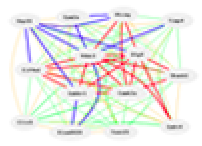| Id |
Strain |
Sex |
Sample_name |
BatchId |
| 1 |
C57BL/6J |
M |
Chip41_Batch02_B6_M_Str |
Batch02 |
| 2 |
C57BL/6J |
M |
Chip11_Batch03_B6_M_Str |
Batch03 |
| 3 |
BXD1 |
F |
Chip03_Batch03_BXD1_F_Str |
Batch03 |
| 4 |
BXD1 |
M |
Chip04_Batch03_BXD1_M_Str |
Batch03 |
| 5 |
BXD2 |
F |
Chip20_Rerun01_BXD2_F_Str |
Rerun01 |
| 6 |
BXD2 |
M |
Chip05_Batch01_BXD2_M_Str |
Batch01 |
| 7 |
BXD5 |
F |
Chip10_Batch03_BXD5_F_Str |
Batch03 |
| 8 |
BXD5 |
M |
Chip12_Batch03_BXD5_M_Str |
Batch03 |
| 9 |
BXD6 |
F |
Chip38_Batch02_BXD6_F_Str |
Batch02 |
| 10 |
BXD6 |
M |
Chip39_Batch02_BXD6_M_Str |
Batch02 |
| 11 |
BXD8 |
F |
Chip07_Batch03_BXD8_F_Str |
Batch03 |
| 12 |
BXD8 |
M |
Chip02_Batch03_BXD8_M_Str |
Batch03 |
| 13 |
BXD9 |
F |
Chip16_Batch01_BXD9_F_Str |
Batch01 |
| 14 |
BXD9 |
M |
Chip10_Batch01_BXD9_M_Str |
Batch01 |
| 15 |
BXD11 |
F |
Chip31_Batch02_BXD11_F_Str |
Batch02 |
| 16 |
BXD12 |
F |
Chip11_Batch01_BXD12_F_Str |
Batch01 |
| 17 |
BXD12 |
M |
Chip18_Batch03_BXD12_M_Str |
Batch03 |
| 18 |
BXD13 |
F |
Chip33_Batch02_BXD13_F_Str |
Batch02 |
| 19 |
BXD14 |
F |
Chip48_Batch02_BXD14_F_Str |
Batch02 |
| 20 |
BXD14 |
M |
Chip47_Rerun01_BXD14_M_Str |
Rerun01 |
| 21 |
BXD15 |
F |
Chip21_Batch01_BXD15_F_Str |
Batch01 |
| 22 |
BXD15 |
M |
Chip13_Batch01_BXD15_M_Str |
Batch01 |
| 23 |
BXD16 |
F |
Chip36_Batch02_BXD16_F_Str |
Batch02 |
| 24 |
BXD16 |
M |
Chip44_Rerun01_BXD16_M_Str |
Rerun01 |
| 25 |
BXD18 |
F |
Chip15_Batch03_BXD18_F_Str |
Batch03 |
| 26 |
BXD18 |
M |
Chip19_Batch03_BXD18_M_Str |
Batch03 |
| 27 |
BXD19 |
F |
Chip19_Batch01_BXD19_F_Str |
Batch01 |
| 28 |
BXD20 |
F |
Chip14_Batch03_BXD20_F_Str |
Batch03 |
| 29 |
BXD21 |
F |
Chip18_Batch01_BXD21_F_Str |
Batch01 |
| 30 |
BXD21 |
M |
Chip09_Batch01_BXD21_M_Str |
Batch01 |
| 31 |
BXD22 |
M |
Chip13_Batch03_BXD22_M_Str |
Batch03 |
| 32 |
BXD23 |
M |
Chip01_Batch03_BXD23_M_Str |
Batch03 |
| 33 |
BXD24 |
M |
Chip17_Batch03_BXD24_M_Str |
Batch03 |
| 34 |
BXD27 |
F |
Chip29_Batch02_BXD27_F_Str |
Batch02 |
| 35 |
BXD27 |
M |
Chip40_Batch02_BXD27_M_Str |
Batch02 |
| 36 |
BXD28 |
F |
Chip06_Batch01_BXD28_F_Str |
Batch01 |
| 37 |
BXD28 |
M |
Chip23_Batch01_BXD28_M_Str |
Batch01 |
| 38 |
BXD29 |
F |
Chip45_Batch02_BXD29_F_Str |
Batch02 |
| 39 |
BXD29 |
M |
Chip42_Batch02_BXD29_M_Str |
Batch02 |
| 40 |
BXD31 |
F |
Chip14_Batch01_BXD31_F_Str |
Batch01 |
| 41 |
BXD31 |
M |
Chip09_Batch03_BXD31_M_Str |
Batch03 |
| 42 |
BXD32 |
M |
Chip30_Batch02_BXD32_M_Str |
Batch02 |
| 43 |
BXD33 |
F |
Chip27_Rerun01_BXD33_F_Str |
Rerun01 |
| 44 |
BXD33 |
M |
Chip34_Batch02_BXD33_M_Str |
Batch02 |
| 45 |
BXD34 |
F |
Chip03_Batch01_BXD34_F_Str |
Batch01 |
| 46 |
BXD34 |
M |
Chip07_Batch01_BXD34_M_Str |
Batch01 |
| 47 |
BXD36 |
F |
Chip22_Batch03_BXD36_F_Str |
Batch03 |
| 48 |
BXD36 |
M |
Chip24_Batch03_BXD36_M_Str |
Batch03 |
| 49 |
BXD38 |
F |
Chip17_Batch01_BXD38_F_Str |
Batch01 |
| 50 |
BXD38 |
M |
Chip24_Batch01_BXD38_M_Str |
Batch01 |
| 51 |
BXD39 |
M |
Chip20_Batch03_BXD39_M_Str |
Batch03 |
| 52 |
BXD39 |
F |
Chip23_Batch03_BXD39_F_Str |
Batch03 |
| 53 |
BXD39 |
M |
Chip43_Rerun01_BXD39_M_Str |
Rerun01 |
| 54 |
BXD40 |
F |
Chip08_Rerun01_BXD40_F_Str |
Rerun01 |
| 55 |
BXD40 |
M |
Chip22_Batch01_BXD40_M_Str |
Batch01 |
| 56 |
BXD42 |
F |
Chip35_Batch02_BXD42_F_Str |
Batch02 |
| 57 |
BXD42 |
M |
Chip32_Batch02_BXD42_M_Str |
Batch02 |
| 58 |
DBA/2J |
M |
Chip02_Batch01_D2_M_Str |
Batch01 |
| 59 |
DBA/2J |
M |
Chip05_Batch03_D2_M_Str |
Batch03 |







